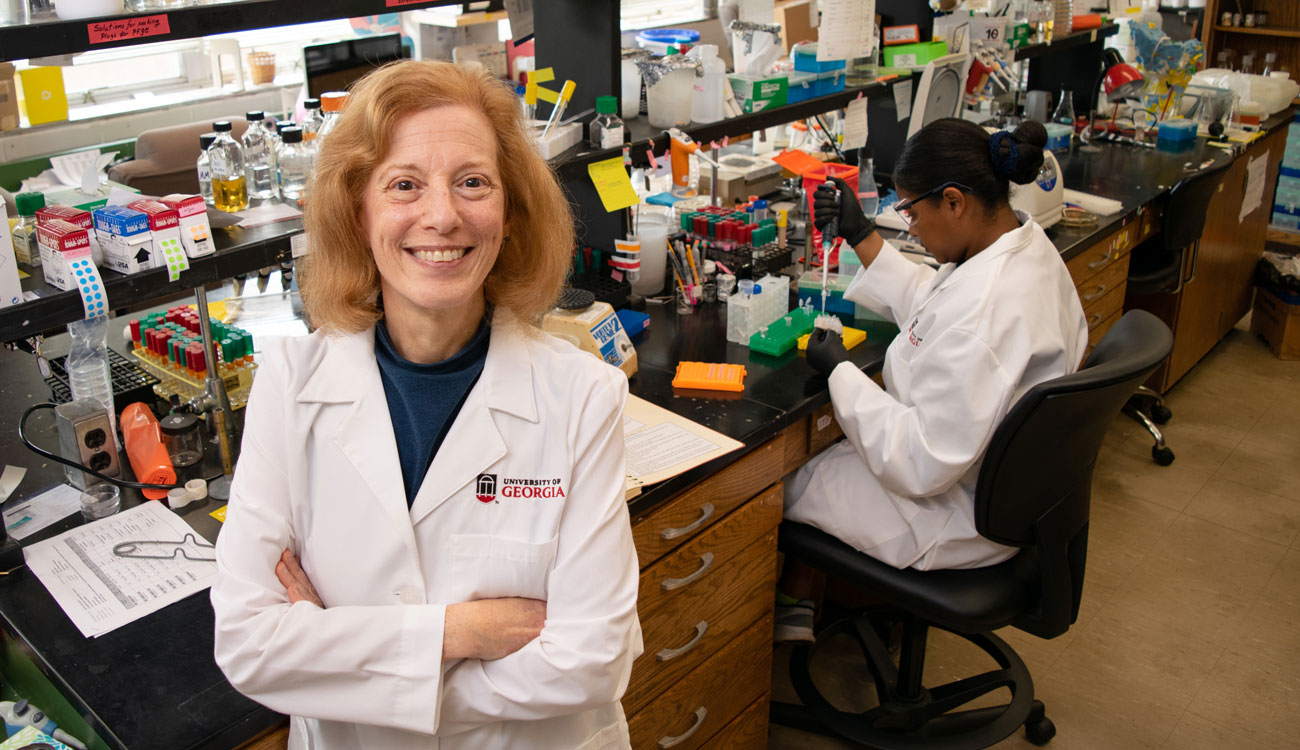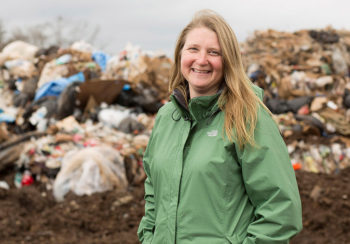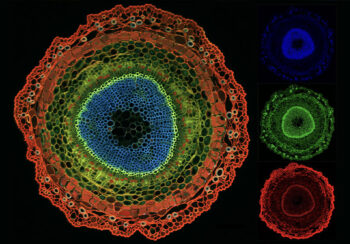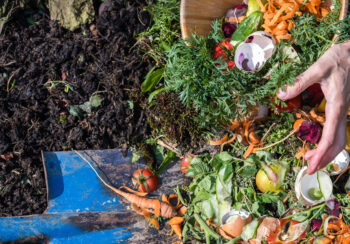In nature, many organisms work together to break down woody plant material to use it for food. Scientists are learning from these organisms how to turn plant waste into useful products. And, just like in nature, it takes a big group of dedicated scientists to tackle this problem. Ellen Neidle, professor of microbiology in the Franklin College of Arts & Sciences, is one of those scientists. Her work in bacterial evolution provides the basis and tools for addressing critical challenges such as plastic recycling and producing biofuels and valuable products from plant material.
What is the focus of your research?
We study soil bacteria and try to take advantage of what they do in the natural environment, harnessing those activities in useful ways to improve aspects of life in our society. For example, the bacteria we study break down compounds from part of plant matter called lignin. These activities have applications for things like cleaning up pollution, because many pollutants have structures similar to compounds that bacteria break down naturally. More recently, this research has been used in fields like bio-energy and biomanufacturing, where we can have bacteria make starting materials for plastics or other polymers instead of relying on petroleum-based products that are not renewable.
What’s special about this soil bacterium you use?
This bacterium is called Acinetobacter baylyi ADP1. It is a harmless organism, has a very facile genetic system and has unique metabolic features. All these factors make it easy to work with, for example, in undergraduate classes. In fact, we have an undergraduate lab class where students conduct authentic research using ADP1.That’s actually one of the things I like about this type of research—bacteria grow very quickly, so you can do a lot of different experiments at the same time. This means research moves relatively quickly, and it’s a very exciting way to both teach students and for us in the lab to learn different aspects of science.
Can you tell us a little bit about the ongoing research projects in your lab?
Most of the projects use a new genetic technique that was developed in our lab. This method builds on natural features of evolution and allows us to isolate bacteria that evolved to do things better or faster. Our method, called EASy (Evolution by Amplification and Synthetic Biology), helps us to accelerate this evolutionary process. With this method, we can insert multiple copies of a gene – which encodes a protein of a desirable function – in a bacterial cell. Under the right conditions, this array of copies means there is a bigger template for evolutionary forces to work on, which accelerates evolution of proteins with improved function.
What are some applications of this research that affect our everyday lives?
We are applying the EASy method to two important problems: one, to have bacteria make useful chemicals out of lignin, which is a natural component of plant material; and two, to get bacteria to break down plastic polymers as a solution to the difficult problem of plastic waste accumulating in the environment. While lignin is found in nature in massive amounts, it is usually discarded as waste or burned for heat. This is not a cost-effective strategy, and in fact economic studies have shown that biofuels will never be economically feasible unless we can make valuable products from lignin.
What are the biggest challenges to taking these solutions from lab to reality?
If these solutions were easy, they would have been accomplished a long time ago. In the case of breaking down lignin, the chemical processes that take place in bacteria are quite complicated. Many people tend to think of bacteria as small and simple organisms, but their metabolism is much more complicated than many people realize. Lignin itself is part of the resistant woody material and has a very complicated structure. For example, if you have a pile of logs in your backyard, they’re not going to degrade very easily.
However, there is hope for making progress on these challenges because there are many different scientists working on these problems from different angles. In terms of plastics, scientists are working on making plastic polymers that can carry out the functions of plastic but will be more amenable to degradation by bacteria. Similarly, plant biologists are working on making genetically-engineered lignin that can serve its purpose in plants but will be more open to bacterial processes.






